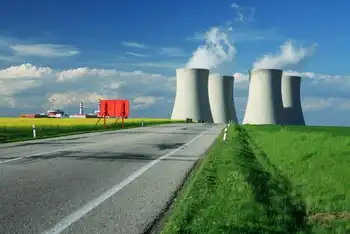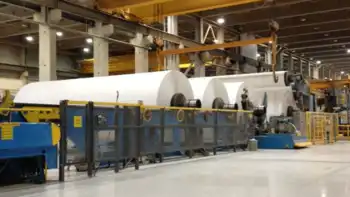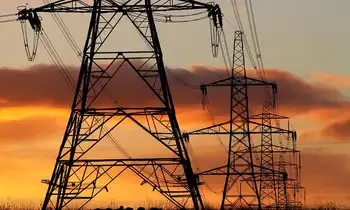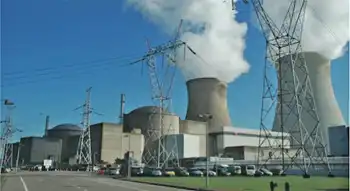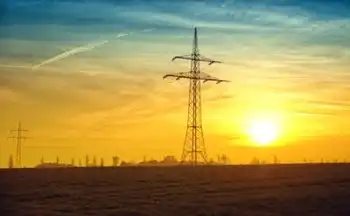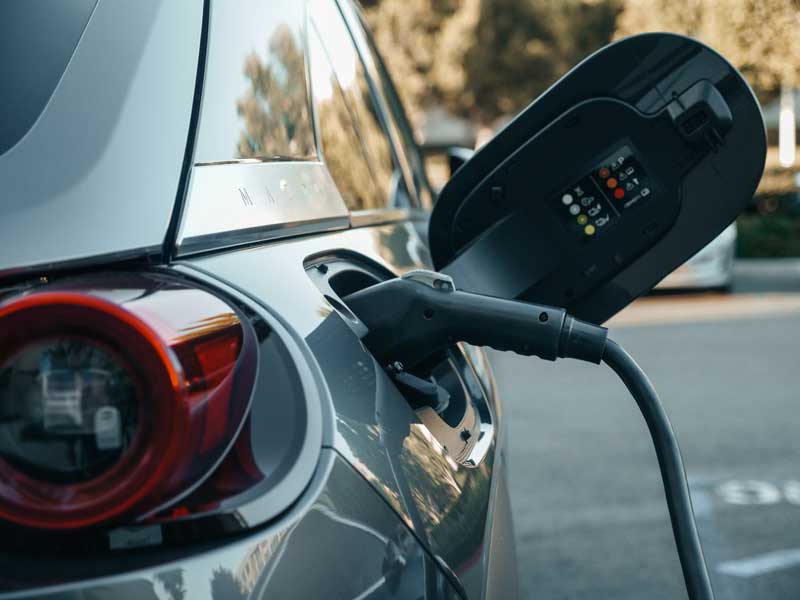Solar thermal – the other kind of solar power
By The Economist
Substation Relay Protection Training
Our customized live online or in‑person group training can be delivered to your staff at your location.

- Live Online
- 12 hours Instructor-led
- Group Training Available
The company will soon begin constructing the first in a series of 14 solar-power plants that will collectively supply more than 2.6 gigawatts (GW) of electricity — enough to serve about 1.8 million homes. But to accomplish this feat BrightSource will not use photovoltaic cells, which generate electricity directly from sunlight and currently constitute the most common form of solar power.
Instead, the company specializes in “concentrating solar-thermal technology” in which mirrors concentrate sunlight to produce heat. That heat is then used to create steam, which in turn drives a turbine to generate electricity.
Solar-thermal power stations have several advantages over solar-photovoltaic projects.
They are typically built on a much larger scale, and historically their costs have been much lower. Compared with other renewable sources of energy, they are probably best able to match a utilityÂ’s electrical load, says Nathaniel Bullard of New Energy Finance, a research firm. They work best when it is hottest and demand is greatest. And the heat they generate can be stored, so the output of a solar-thermal plant does not fluctuate as wildly as that of a photovoltaic system.
Moreover, since they use a turbine to generate electricity from heat, most solar-thermal plants can be easily and inexpensively supplemented with natural-gas boilers, enabling them to perform as reliably as a fossil-fuel power plant.
Besides these benefits, the main drivers for the growth of the solar-thermal industry are moves to limit carbon-dioxide emissions and requirements to increase the proportion of electricity produced from renewable sources.
According to New Energy Finance, about 12GW of concentrating solar-thermal power capacity is being planned worldwide — a vast amount, given that only about 500 megawatts (MW) of such capacity has been built to date. To maximize the energy that can be collected from the sun, solar-power facilities are being constructed in regions that enjoy daily uninterrupted sunshine for much of the year.
According to Mark Mehos of AmericaÂ’s National Renewable Energy Laboratory, solar-thermal power could in theory generate 11,000GW in AmericaÂ’s southwest. That is about ten times AmericaÂ’s entire existing power-generation capacity.
Simple techniques for concentrating sunlight to generate heat date back thousands of years. In China and ancient Greece, people focused the sunÂ’s rays with mirrors or glass to light fires. In times of war, the same approach is said to have been used to set enemy ships ablaze. By the early 20th century several scientists had built simple machines that could run on concentrated heat from the sun.
A significant milestone was reached in 1913 when Frank Shuman, an American inventor, created the first large solar-thermal pumping station in Meadi, Egypt. He designed a system based on five large reflectors, each 62 metres long and made of glass mirrors arranged to form a trough in the shape of a parabola. Each parabolic trough focused sunlight onto a tube running along its length, heating the water inside it.
The resulting steam powered an engine connected to a pump capable of delivering 6,000 gallons of water a minute from the Nile to nearby fields.
The modern history of solar-thermal power began after the oil crises of the 1970s, which prompted many nations to start to investigate clean and renewable energy sources as alternatives to fossil fuels. Over the following decades America, Spain and a handful of other countries built solar-thermal pilot plants for research purposes.
The first company to implement the technology on a commercial scale was Luz International, an Israeli company founded in 1980.
Drawing on prior research, Luz began building a series of solar-thermal power stations in CaliforniaÂ’s Mojave desert in the mid-1980s. Like Mr Shuman before, the company used parabolic troughs to focus sunlight on to liquid-filled tubes, but instead of water they used oil as the heat-transfer fluid.
Once it reached a temperature of about 390°C, the hot oil was pumped to a so-called “power block” where it went through a series of heat exchangers, turning water into steam and powering a conventional steam-turbine. The turbine then turned a generator to produce electricity.
By 1990 Luz had constructed nine plants with a total capacity of 354MW. At the time, solar-thermal power was producing about 90% of all solar electricity in the world, says Arnold Goldman, the former chief executive of Luz, who is now chairman of BrightSource. But when the price of natural gas fell and AmericaÂ’s tax incentives for solar power were not renewed, the industry came to a grinding halt.
For nearly two decades no new commercial solar-thermal plants began operating. In the meantime, solar-photovoltaic technology slowly took over the market, and by 2007 worldwide installed capacity reached 9.2GW.
Although it is more expensive per kilowatt-hour, solar panels can be deployed in small, modular systems, and thus require much less capital investment. Moreover, they can generate power off the grid, which turned out to be an important market for solar power in its early days.
Now, as the solar-thermal industry is experiencing a revival, parabolic-trough projects are garnering much of todayÂ’s investment money because of their proven track record. To improve the economics still further, SkyFuel, a firm based in New Mexico, is replacing curved glass mirrors, which are expensive to make, with a thin, reflective low-cost film. And other competing solar-thermal technologies that were developed in parallel with trough-based systems, but never commercialized, are also ready to be deployed.
Among them is an approach that BrightSource uses, in which a field of small, flat mirrors called “heliostats” redirect and concentrate sunlight onto a central receiver at the top of a tower. The tower contains a fluid, typically water, which boils and the resulting steam is then transferred to a nearby “power block”, where it spins a conventional turbine. The advantage of this “power tower” approach is that it can produce steam at a temperature of 550°C and can thus achieve a higher thermal-to-electric efficiency than trough-based systems, says John Woolard, the chief executive of BrightSource.
In addition, he says, power-tower systems suffer from fewer pumping losses than trough-based designs. The first commercial power-tower began operating in Spain in 2007.
Another advance that makes solar-thermal power more economically and technologically viable than in the past is the ability to use a large number of smaller and less expensive mirrors, steered by computer systems, to ensure more accurate and automatic tracking and redirection of sunlight than was ever possible before.
Bill Gross, the chief executive of eSolar, a developer of “power tower” technology based in Pasadena, California, says his firm is using software to turn thousands of flat mirrors and shape them into a continuously evolving parabola around the tower.
Both power-tower and parabolic-trough systems can store thermal energy in the form of hot, molten salt. It is then possible to generate steam, and thus electricity, even when the sun is not shining. Solar-thermal plants without storage can operate about 30% of the year; but with storage that number could climb to 70% or higher.
Unfortunately storage is expensive, and is only economical when regulators provide incentives.
In Spain, for example, producers of solar-thermal power receive a guaranteed feed-in tariff. That makes it particularly appealing for Spanish plants to have storage capabilities, to maximize their ability to sell electricity to utilities.
In America the main incentives for solar-thermal projects are a 30% investment-tax credit or an equivalent cash grant. As a result, American plants have to be built more cheaply in order to make a profit, and thus typically do not include storage.
A cheaper alternative to storage is hybridization. All the original Luz plants also have natural-gas boilers that can generate steam when the sun is not shining. Because solar-thermal plants have a power block and turbine already in place, the extra cost is marginal.
Hybridization could also be done the other way around, by using steam generated from solar-thermal collectors to help drive the turbines at existing coal or gas plants.
The Electric Power Research Institute, based in Palo Alto, is studying the feasibility of this approach as a means of reducing fuel costs and emissions at existing power stations.
In addition to parabolic troughs and power-towers there is also a third solar-thermal technology, which combines curved, dish-shaped mirrors with heat engines. In a dish-engine design, the mirrors concentrate sunlight to generate heat, which then typically powers a Stirling engine — a machine that converts heat into mechanical energy by compressing and expanding a fixed quantity of gas. The change in pressure drives the engine’s pistons, which drive a shaft that turns a generator to produce electricity.
Although they are highly efficient, Stirling engines have seen little practical use since their invention nearly two centuries ago, and so far there are no commercial solar-thermal systems that use this approach. Critics of the technology say it involves too many moving parts, making it more complex and expensive to operate and maintain than competing technologies.
Stirling Energy Systems, based in Phoenix, Arizona, hopes to prove the doubters wrong.
It has signed two large power-purchase agreements, for up to 1,750MW, and plans to fulfill them using dish-engine systems built in conjunction with its sister company, Tessera Solar. Both projects are due to start construction as early as 2010.
One obstacle hampering the growth of the entire field is the difficulty of obtaining financing for solar-thermal projects in the current economic climate, says Thomas Mancini, program manager for concentrating solar-power at Sandia National Laboratories. As a result, some announced projects may be delayed or perhaps never be built.
The situation has prompted some companies to change their business models: Ausra, a solar-thermal company based in Mountain View, California, has switched from being an independent power-producer to being mostly an equipment supplier, for example.
Although solar-thermal power produces no carbon-dioxide emissions, it can have some negative environmental impacts. Both power-tower and trough-based systems are typically water-cooled, and require millions of gallons of water annually. That can cause big problems, especially in desert environments.
The California Energy Commission recently urged NextEra Energy Resources, a renewable-energy company, to consider dry cooling instead of using water for its proposed solar-thermal power project in Kern County, California. (Stirling-engine designs do not require water for cooling.)
Another potential problem when building power plants in remote locations is a lack of transmission lines, since it is difficult and expensive to get new transmission lines approved and built.
Despite these problems, many people think a massive scale-up of the industry is imminent.
Among them is Mr Woolard, who believes that solar-thermal power could regain its historical lead over the solar-photovoltaic approach. Competition from photovoltaic systems for large-scale power generation should not be underestimated, however.
According to Mr Bullard, thin-film solar-cell modules are rapidly falling in price, and can generate electricity more cheaply than solar-thermal power in some situations. But no matter which approach comes out on top, competition between the two technologies is sure to foster continued innovation, and a growing supply of clean electricity, in the years to come.





